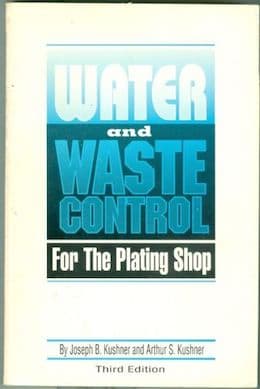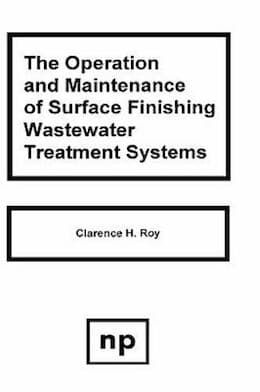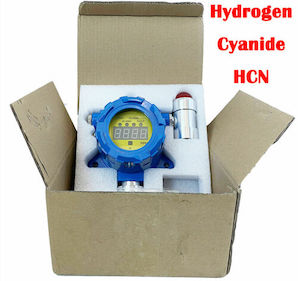
-----
Wastewater treatment issues: Cyanide destruction questions
Q. Hello everyone! Thank you very much for your helpful answers. Is there an ORP value that helps to determine the amount of peroxide I should use in the process? I can tell that alkaline chlorination is very precise.
Kind regards,
- Medellin- Colombia
September 12, 2023
Q. I am looking for information on how to batch treat our rinse water from our Almate zincate process before transferring to our evaporation system. I assume I need to destroy the cyanide component before mixing with the waste stream.
Rinse water contains sodium cyanide and caustic soda.
Can anyone point me in the right direction?
Thanks,
Bruce
- PHX, Arizona
1998
A. Hi Bruce. The most economical way is usually with sodium hypochlorite (industrial strength bleach)
⇦ bleach/sodium hypochlorite in bulk on
eBay
or
Amazon [affil link]
. If you are batch-treating because you have very little such waste water, and you are looking for a minimal system, it can be done manually.
First, you raise the pH to at least 11.5, if necessary, with further additions of an alkali (with good mixing). Since you are already familiar with caustic soda ⇦liquid caustic soda in bulk on
Amazon [affil link]
, that could be a good choice for the alkali.
Second, you add the bleach, slowly, with mixing, until there remains an excess of chlorine as indicated by a dark blue to light purple color on potassium iodide
starch paper
[affil link].
You have now converted the amenable cyanides to cyanates, and in many cases the waste can now be combined with your other flows for pH adjustment and precipitation. If the waste is to be evaporated and hauled, as I am inferring, this may be all you need to do for cyanide treatment.
You asked to be pointed in the right direction, and I hope we've helped, but you should have a competent consultant or laboratory person help you out and give you hands-on instruction, and you must verify that this idea meets the requirements of your operating permit. Best of luck.

Ted Mooney, P.E.
Striving to live Aloha
finishing.com - Pine Beach, New Jersey
Ted can be retained for immediate
answers or long term project help
A. The most reliable method for treating cyanide is with an ORP (oxygen reduction potential) meter. Some portable pH meters have ORP capabilities. The pH works best between 11.0 and 11.5. The higher the pH, the more bleach it takes to reach the proper ORP reading. At the proper pH, add bleach until the ORP meter reads 450 mV. This will break the cyanide down to the cyanate. You might want to check your permits to make sure it is alright to release cyanates into your rinse water flow. Some regulations require the cyanide to be totally destructed before doing so. To finish the destruction, raise the pH to about 8.5. The ORP reading should be a minimum of 600 mV at this point. Excess bleach may need to be added to achieve this. Good Luck.
Phil Pace- Tulsa, Oklahoma
A. The destruction of sodium or potassium cyanate is done with hydrogen peroxide (H2O2). You could also write the reaction that will give you ammonia.
Bouzar Essaidi Samir- Bouzareah, Algeria
2003
Q. Thanks for the informative page, I'm chasing some more detailed information on destruction of NaCN in wastewater. I did see a book on the topic a number of years ago (~5 years)- It may have specifically dealt with its destruction in an artificial wetland. Any assistance greatly appreciated.
Robert Catchpoole1999
by Kushner & Kushner

on eBay (rarely)
or Amazon (rarely)
(affil link)
by Clarence Roy

on eBay or Amazon
or AbeBooks
(affil link)
A. Hi Robert. Myself and most of the regular readers are from the metal finishing industry. We can recommend good books that cover cyanide destruction for metal finishing, like Cherry's "Plating Waste Treatment" ⇨
and Roy's "... Surface Finishing Wastewater Treatment Systems" ⇨
But they probably aren't highly applicable to treatment by artificial wetlands, the reason being that metal finishing wastes contain metals as well as cyanide, and you probably don't want to put those metals out into the environment.
Regards,

Ted Mooney, P.E.
Striving to live Aloha
finishing.com - Pine Beach, New Jersey
Ted can be retained for immediate
answers or long term project help
! Just a thought if you're not aware, you can make sodium hypochlorite in house.You only need a vessel, tank, etc.(sized for your needs), and a electric variac with an anode and the tank for a cathode. Just add salt & water.
Mitchell Lee Shepard- Gilbert, Arizona, U.S.A.
2001
A. That's true, Mitchell, thanks! But the readers should know that the thing causing the chlorine to go into solution as sodium hypochlorite versus evolving into the room as poisonous chlorine gas, is the high solubility of chorine at high pH. If they generate too much chlorine or fail to keep the solution sufficiently alkaline, they can soon have a roomful of poisonous, choking chlorine -- so they need to do a bit of study first.

Ted Mooney, P.E.
Striving to live Aloha
finishing.com - Pine Beach, New Jersey
Ted can be retained for immediate
answers or long term project help
Q. Can excessive bleach impair the further reduction of cyanide?
Mark Z [surname deleted for privacy by Editor]- Santa Ana, California
November 20, 2008
A. Hi Mark. Not to my knowledge. However, excessive chlorine can wreak havoc further along in the treatment process.
Regards,

Ted Mooney, P.E.
Striving to live Aloha
finishing.com - Pine Beach, New Jersey
Ted can be retained for immediate
answers or long term project help
Cyanide safety, cyanide detectors, antidotes
Q. Dear Metal Finishing team,
Our labs will be dealing with cyanides after Christmas for small scale stripping and plating baths and I have to write a security protocol to make sure that people know what to do if there is any accident with cyanide solutions.
I came up with a scenario where someone would spill a solution of cyanide into the sink drain. What do I do to neutralize cyanides?
As far as I know, you can neutralize cyanide with a Sodium Hypochlorite solution (Bleach) under basic conditions (pH = 9-11) which will oxidize cyanides (CN-) ions into cyanates (CNO-) ions. However cyanate is also toxic (not as much, but still), but I read that you can transform them into NH3 and CO2 by adding a strong inorganic acid to cyanates ( bringing to pH =2). However, my concern is that I'm afraid that by adding acid to the solution, the cyanate will be transformed back into cyanides and will produce HCN (something that we don't really want to happen). Are my concerns right?
Thanks for your help,
Industrial Materials Institute - National Research Council of Canada - Boucherville, Quebec, Canada
2000
A. You are correct about the first step: adding bleach at a pH of greater than 10 will oxidize the cyanide to cyanate within just a few minutes. Although if the spill has a lot of cyanide (if it's a stripper rather than a rinse), you probably should dilute it along the way. A very easy test tool for the first treatment step is potassium iodide
starch paper
[affil link]. As long as it turns dark blue there is excess bleach present, which means the amenable cyanide has been destroyed if the pH was right.
Once the cyanide has been converted to cyanate this way, it will not be reconverted to cyanide.
The chemistry behind your second step is only partially correct, however. First, I don't think you need to reduce the pH to anywhere near 2.0 -- more like 7.0-8.0 should be adequate. Second, you need to add a lot more bleach to complete the oxidation. This reaction is much slower, and you should allow at least an hour, even for treatment of dilute wastes.
I've been in the waste treatment industry from the time when single-stage cyanide treatment was acceptable. Although I'm not personally aware of any cases where acid was added to cyanide-bearing waste before it was inadequately chlorinated, it has almost surely happened, and I certainly share your concern about the inherent danger in prescribing a procedure that has the potential to go so tragically wrong.
So be careful that have a reliable mixing mechanism and the cyanide waste is not somehow stratified away from the bleach.

Ted Mooney, P.E.
Striving to live Aloha
finishing.com - Pine Beach, New Jersey
Ted can be retained for immediate
answers or long term project help
A. Only one point to add. In my army days, we were taught that immediate first aid for cyanide poisoning was administration of amyl nitrite inhalant. Unfortunately, these can be hard to obtain.

James Totter, CEF
- Tallahassee, Florida
A. In addition to the amyl nitrite, I would be sure that my local emergency room has a cyanide antidote kit. We actually have had one prescribed to us and keep it in our plating office to be sent to the hospital with emergency personnel. Many hospitals do not have a kit readily available so the best way is to have it on hand. Your company physician could help with this. Bill
William F. Morgan- Saratoga Springs, N.Y. USA
A. I currently operate a cyanide based plating process with a heavy emphasis on safety. If you have a potential to generate HCN Gas you need detectors (visual and audio). Current advice is to have at hand Drager Tubes, Oxygen cylinders and related breathing apparatus rather than amyl nitrite capsules. Intravenous antidote kit for paramedics when they arrive is also advisable.
Sean O Reilly- Ireland
A. Thanks Sean, but American readers should remember that U.K. medical opinion may influence, but does not determine, U.S. law :-)
Shops will be fined by OSHA if they don't have the amyl nitrite capsules (which are the abusable drug commonly known as "poppers", so are sometimes troublesome to find legitimately). If you do acquire them, I've heard that a good way to manage them is to keep them behind a "Break Glass" box like sometimes used for fire alarms.
At one time Eli Lilly offered a "cyanide antidote kit" which had the capsules, the intravenous solutions, and everything conveniently packaged. I understand that the kit is now known as the "Pasadena cyanide antidote kit". Your poison control center, emergency management response team, or anti-terrorism response team will know what you are talking about if a local pharmacist gives you a blank stare.
Cyanide detectors
⇦ on
eBay
or
Amazon [affil link]
are CRITICALLY necessary, not only to warn people when there IS cyanide, but more importantly to help assure them when there IS NOT! Why? According to an editorial I read recently, the First Aid Squad was called to a plating shop for a distressed victim who the manager believed was suffering a heart attack. The (perhaps paranoid) Squad saw cyanide warning signs and treated him (or failed to treat him) accordingly. He died and, according to the editorial, no autopsy was ever performed, again for fear of cyanide poisoning. Heart attack is a far more common cause of distress than cyanide poisoning and you absolutely need multiple detectors to demonstrate that the problem is NOT cyanide or your workers may not receive proper medical treatment.

Ted Mooney, P.E.
Striving to live Aloha
finishing.com - Pine Beach, New Jersey
Ted can be retained for immediate
answers or long term project help
A. I've one other thing to add.
If someone has passed out from cyanide gas, then don't give them the "kiss of life" or you too could be poisoned. There is a method for resuscitation, and I've seen it described in The Canning Handbook [on
eBay,
Amazon,
AbeBooks affil links], I'd take it that other cyanide solution suppliers would give this information also.
university - Glasgow, Scotland
2001
Ed. note: Please note that the above entries are rather old; check the current status of regulations in your area before proceeding.
![]() I wanted to commend you for bringing that up about the kiss of life. Many people wouldn't necessarily know to think about cross poisoning from CPR and another thing to add to that is CPR would do absolutely no good until the antidote is administered, because cyanide prevents blood vessels from exchanging oxygen.
I wanted to commend you for bringing that up about the kiss of life. Many people wouldn't necessarily know to think about cross poisoning from CPR and another thing to add to that is CPR would do absolutely no good until the antidote is administered, because cyanide prevents blood vessels from exchanging oxygen.
- York, Nebraska
January 31, 2024
! Today, many companies are very careful of how to handle or store liquid for disposal, that contains "Cyanide". However, as mentioned before by Daniel Picard, and Ted Mooney, I will repeat it too in my post.
For example:
If you want to neutralize acid liquid with caustic liquid, first thing, a person takes a sample from the caustic tank, and use a kit that test for Cyanide. The kit stated that pH must be neutral, so, your first step is to neutralize your sample with acid, until you reach a neutral level. Note, Cyanide is released when the pH is low, so, know what you are doing in term of safety.
Use your Cyanide kit to test for Cyanide. If there is, let say 1 ppm or higher, than you want to find out how much it is needed to neutralize Cyanide.
Add drops of Sodium Hypochlorite (bleach), few drops, and check again. Find out how much you added. Use your potassium iodide
starch paper
[affil link] as Ted Mooney said.
When you know how much it takes to add bleach, than use that amount to neutralize your caustic in the tank.
After neutralizing is complete, you will be able to neutralize your acid/caustic for disposal..
- Hamilton, Ontario, Canada
2007
|
Q. How is cyanide disposed? Nicholas K [surname deleted for privacy by Editor]student - Kenya July 13, 2011 C'mon now cousin Nicholas! A good deal of information in response to that question was already posted on this very page. Posting a 4-word question isn't the way to do your science homework :-) Please do yourself and your teachers proud by saying: "I generally understood your explanation that cyanide wastes can be disposed of by (blah, blah, blah), but what I don't fully understand yet is ..." :-) Regards,  Ted Mooney, P.E. Striving to live Aloha finishing.com - Pine Beach, New Jersey Ted can be retained for immediate answers or long term project help |
2-step Chemical Treatment of Cyanide Waste vs. Thermal Hydrolysis
Q. I am to get quotes for a "turnkey" system to destruct cyanide. My search for information suggests the 2-step process: Cyanide to Cyanate using pH10 or higher and ORP sensors (+) 250 mV for around 15-30 minutes with mixing.
Second takes 8.5-9 pH since alkali is lower and NaOH can control the pH. The oxidant is added till ORP reads @(+) 300 mV. However, one website claims the use of Thermal Hydrolysis systems. Is anyone familiar with this?
electronics - Pelzer, South Carolina, USA
July 20, 2012
A. Thermal hydrolysis is an effective method for cyanide destruction. However, the by-products are formaldehyde and ammonia which also have potential disposal problems.
Lyle Kirmanconsultant - Cleveland Heights, Ohio
Q. Lyle,
I thought longer residence times at high temps would kill both of the byproducts that you mentioned. Am I wrong?
- Navarre, Florida
A. James,
I don't think the temperatures are high enough to destroy ammonia or oxidizing enough to convert formaldehyde to formate, but I'm not sure about this. Conversion of formaldehyde to formate is a relatively simple reaction with peroxide but ammonia can be a problem if the discharge permit has a limit for it.
consultant - Cleveland Heights, Ohio
Q. Sounds like even at 80k for a small Thermal Hydrolysis system it just creates different problems to replace the cyanide problem. With low quantities of waste (200 gallons/ month) and having to get permits from DHEC and waste water treatment center approval, paying for consultants, getting drawings approved by PE in the field, getting a certified outside lab to prove your process, having a state certified employee working under our licensed waste facility coordinator, running a process with potential deadly risk all to avoid paying @350/50 gallon drum. Unless I'm being told an exaggerated version of what needs to be done, why would any facility process cyanide waste? Sorry for the rant but too much paperwork to make money.
James Davis [returning]- Pelzer, South Carolina
July 30, 2012
A. While there is a great amount of paperwork with plating and the whole world knows that you use cyanide are good reasons to avoid it if at all possible.
Some of what the prior reply listed is for a certified waste treatment facility. There used to be ways around this classification. Check with the state first and then the EPA region and a good consultant when you get answers that do not seem correct.
- Navarre, Florida
Ed. note: For more on this topic, please also see topic 40394, "Cyanide plating waste water treatment".
Q. Please let me know how to test cyanide concentration in plating waste.
H.R. NAGESHmfr of sodium hypochlorite - Bangalore, Karnataka, India
June 27, 2014
A. Hi Nagesh. As above, potassium iodide starch paper [affil link] or an ORP meter can be easily used to quickly determine that essentially all amenable cyanide has been removed. See the above discussion as well as the referenced link for the techniques, indications, required pH for the operation, etc.
But if you are asking how to do a quantitative analysis for total cyanide, this is a rather sophisticated test, and a repetitive complaint has long been that highly skilled labs get differing results on split samples. Please see topic 12425, "Cyanide Wastewater Analytical Result Variations" if that is your interest. Good luck.
Regards,

Ted Mooney, P.E.
Striving to live Aloha
finishing.com - Pine Beach, New Jersey
Ted can be retained for immediate
answers or long term project help
⇦ Tip: Readers want to learn from your situation;
so some readers skip abstract questions.
Q. Does sunlight (ultraviolet light) breakdown / oxidise cyanide?
Ernie van StadenZimelutions - Harare. Zimbabwe
December 1, 2018
A. Hi Ernie. lima beans & almonds would not contain cyanide if sunlight reliably destroyed it; and there are analytical methods for cyanide that involve ultraviolet light in the analysis. So moderate amounts of UV do not quickly destroy cyanide.
Regards,

Ted Mooney, P.E. RET
Striving to live Aloha
finishing.com - Pine Beach, New Jersey
Ted can be retained for immediate
answers or long term project help
December 2018
A. Almond and apple pips do not contain cyanide. They contain amygdalin, sometimes called laetrile or vitamin B17 which can break down to produce cyanide.
Ultra violet light has been proposed for the treatment of cyanide containing effluents but I would expect the low UV content of sunlight to have minimal effect.
More information at
https://www.ncbi.nlm.nih.gov/pubmed/15561362
and similar.

Geoff Smith
Hampshire, England
December 1, 2018
Q. Ted and Geoff... Thank you.
Sorry, my question wasn't abstract as such. I have been mining & cyanide processing gold for some years. Our waste sands are still damp from the leach tanks when we remove it to the 'barren dump'- therefore containing some cyanide in the moisture. after some time on the dump one can no longer smell the cyanide and we've never seen any ill effects of animals ( I'm in Africa) that live around the dump even after rain fall which would leach the residual cyanide into the puddles. My FIL who's been mining for many years told me that the cyanide 'oxidises' and is neutralised in the sunlight (hence UV).Hence my question.
How is the cyanide naturally destroyed?
dump leaching - Harare, Zimbabwe
December 3, 2018
A. Hi Ernie,
I would think more of a bacterial catalyzed oxidation of cyanide than a UV-based oxidation. Cyanide is a relatively stable ion, and is very difficult to remove below some concentrations.
There are some bacteria capable of doing that job, and in some gold mines there is a bacterial wastewater treatment for cyanide.
I really hope this operation doesn't leach cyanide into the puddles as you say, because it would be very bad for the animals and it could pollute more than just this random puddle near the dump.
Best regards,
TEL - N FERRARIS - Cañuelas, Buenos Aires, Argentina
December 3, 2018
⇦ Tip: Readers want to learn from your situation;
so some readers skip abstract questions.
Q. How much Hydrogen peroxide is needed to destroy one gram of sodium cyanide in 100 or 200 ml solution?
- iran
June 13, 2021
A. Hi Saadat. The reaction is:
So, stoichiometrically, one mole of peroxide is needed to reduce one mole of cyanide to cyanate. But obviously there is a lot more involved in dealing with real-world situations; consequently, much more peroxide is probably actually needed.
Luck & Regards,

Ted Mooney, P.E. RET
Striving to live Aloha
finishing.com - Pine Beach, New Jersey
Ted can be retained for immediate
answers or long term project help

Nadcap Chemical Processing Auditor - PRI, traveling
Process Engineer / Chemist - Denver Metal Finishing, Colorado
Q, A, or Comment on THIS thread -or- Start a NEW Thread
